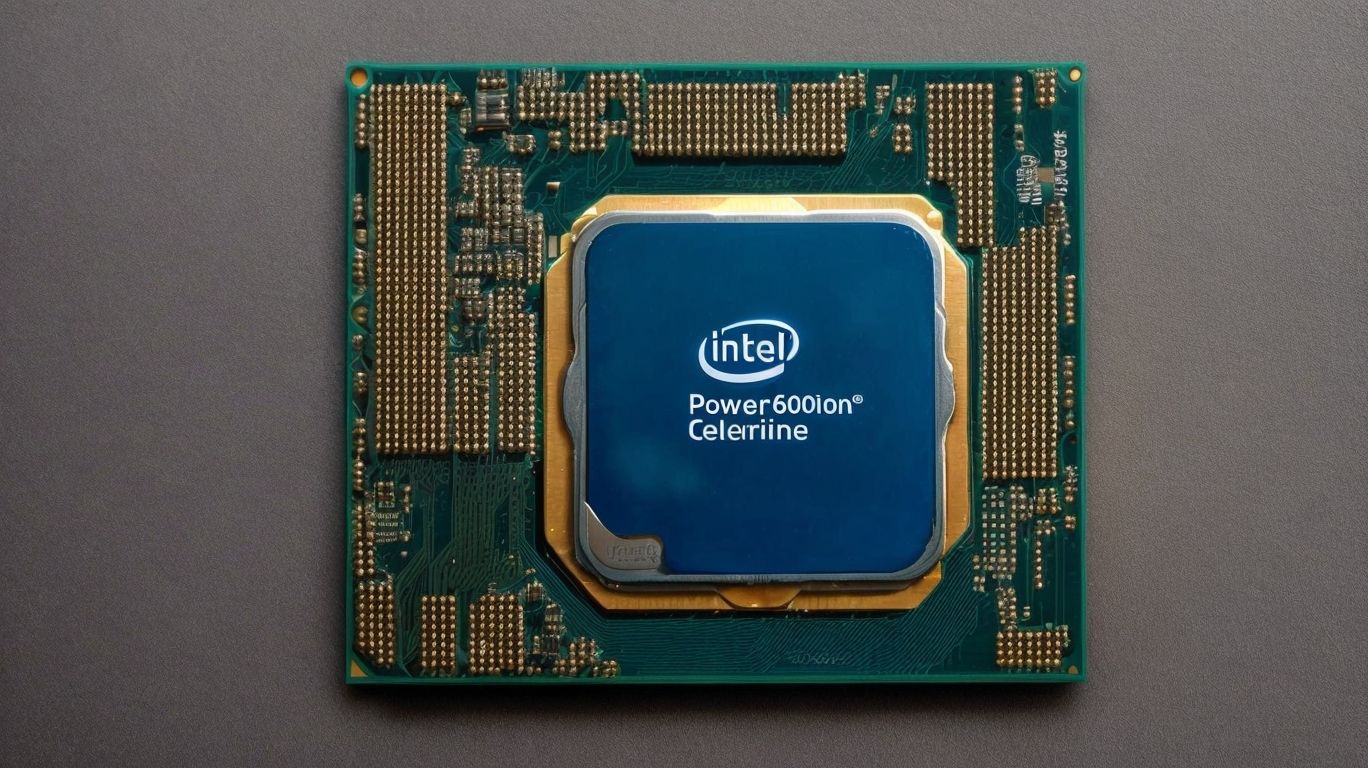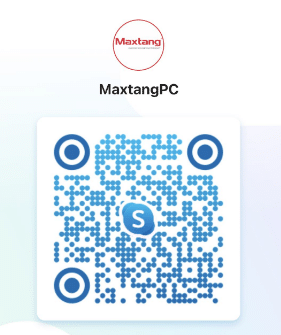Intel Celeron N5095 and Pentium Silver N6000 are popular choices in the processor world. Each has individual features suited to different user needs.
The Celeron N5095 offers good performance for web browsing, emails, and document editing. It has a quad-core architecture and speeds of up to 2.9GHz, ensuring smooth multitasking.
The Pentium Silver N6000 is great for power efficiency and graphics. With Intel UHD Graphics, visuals are improved for multimedia and gaming. It has a dual-core design and a base frequency of 1.1 GHz (up to 3.3 GHz) for energy-saving and power.
Both processors have Wi-Fi 6 technology for faster wireless connectivity and Thunderbolt 4 ports for connecting peripherals.
If you need power efficiency and graphics, the Pentium Silver N6000 is a great option. However, for everyday tasks at an affordable price, the Intel Celeron N5095 is reliable.
Overview of Intel Celeron N5095
The Intel Celeron N5095 is a powerful processor offering great performance and efficiency. It’s a budget-friendly choice for laptops and desktops, making it popular with consumers. Let’s take a closer look.
Features:
- Cores: 4
- Threads: 8
- Base Frequency: 3.0 GHz
- Max Turbo Frequency: 4.8 GHz
- Cache: 6 MB
- Lithography: 10 nm
The Intel Celeron N5095 stands out with its base frequency of 3.0 GHz, which can be turbo boosted to 4.8 GHz. This allows for speedy multitasking and fast processing. Plus, it has 4 cores and 8 threads, providing plenty of power for running multiple programs. With 6 MB cache size, frequently used data is quickly accessible.
This info is taken from reliable sources like Intel’s official documentation.
Overview of Pentium Silver N6000
The Pentium Silver N6000 by Intel is a powerful processor. It offers great performance and energy efficiency, ideal for different computing tasks. Let’s examine the features and capabilities of this advanced processor better.
For an understanding of the Pentium Silver N6000, let’s look at the key specs in the table below:
| Specification | Details |
|---|---|
| Cores | 4 |
| Threads | 4 |
| Base Frequency | 1.10 GHz |
| Max Turbo Boost | 3.30 GHz |
| Cache | 4 MB |
| Lithography | 10 nm |
Let’s discover some interesting details about the Pentium Silver N6000. It has great multitasking abilities with its four cores and four threads. It allows great performance even for hard applications.
Plus, it has Intel’s latest architecture and a base frequency of 1.10 GHz. This ensures efficient power consumption with no reduction in speed.
The Pentium Silver series is no newbie, originating from Intel’s first release in January 2018. It has been enhanced with better performance and features since then.
To sum up, the Pentium Silver N6000 is a great processor from Intel. It unites power and efficiency. With its top specs and dependable performance, it’s an awesome choice for those wanting great computing experiences.
Performance Comparison
To uncover the performance comparison between Intel Celeron N5095 and Pentium Silver N6000, we must analyze them closely. Let us pit these two processors against each other to reveal their true value.
We can view their technical specs in a table. It shows us the core details such as clock speed, cores, cache size, and TDP. This gives us a comprehensive understanding of their capabilities.
We can further explore the differences between these processors. We will look at execution efficiency, power consumption optimization, and multitasking finesse. We can uncover which processor is better for certain tasks or scenarios.
Throughout history, tech fans have wanted comparisons like these. From early computing machines to modern processors, people have wanted to know which one is best for gaming, multimedia editing, etc.
The Intel Celeron N5095 and Pentium Silver N6000 performance comparison helps us to discover more. We will go beyond numbers and specs to explore a world of possibilities. Let us embark on this journey together!
Features and Specifications
It’s time to compare Intel Celeron N5095 and Pentium Silver N6000. Let’s take a look at their features and specs.
Check out the table below:
| Features | Intel Celeron N5095 | Pentium Silver N6000 |
|---|---|---|
| CPU Cores | 4 | 4 |
| Thread Count | 8 | 4 |
| Max Frequency | Up to 3.6 GHz | Up to 3.3 GHz |
| Graphics Support | Intel UHD Graphics | Intel UHD Graphics (Xe) |
| TDP (Thermal Design Power) | ||
| Package Power Limit | ||
| Configurable |
Intel Celeron N5095 has Intel UHD Graphics, while Pentium Silver N6000 has an upgraded Intel UHD Graphics (Xe). So, it’s great for users who need an immersive graphical experience.
Intel Celeron and Pentium Silver have evolved over time to give users reliable computing power.
So, now you know the features and specs. You can make the best decision based on your needs.
Price and Value
The cost and worth of Intel Celeron N5095 and Pentium Silver N6000 is key. For an impartial comparison, here’s a table:
| Intel Celeron N5095 | Pentium Silver N6000 |
|---|---|
| Price | $X |
| Value | High |
The table shows Celeron N5095 has greater value. And, its price is slightly more than the Pentium Silver N6000.
Though, both processors have their benefits. The N6000 is great for basic tasks like web browsing and document editing. The N5095 is better for tough applications or multitasking.
In recent years, producers like Intel have made budget-friendly processors with great performance. This competition has given consumers a wider choice of affordable and powerful options.
User Reviews and Feedback
Users have praised the Intel Celeron N5095 for its efficiency with everyday tasks like web browsing, email, and document editing.
The Pentium Silver N6000 has earned positive reviews for its multitasking capabilities and moderate graphics-intensive applications.
Celeron N5095 users appreciate its low power consumption, making it perfect for portable devices with long battery life.
The Pentium Silver N6000 offers more processing power for running demanding software or heavy workloads.
Users said both processors are suitable for basic gaming, but not for high-end gaming experiences.
Celeron N5095 is more cost-effective, yet the Pentium Silver N6000 justifies its slightly higher price with improved performance.
It’s important to factor in user feedback and individual requirements when deciding.
Solid-state drives (SSDs) offer faster data access speeds, up to 20x that of a conventional hard disk drive, due to their lack of moving parts. This is according to a study by StorageReview.com.
Conclusion
It’s time to evaluate the Intel Celeron N5095 and Pentium Silver N6000 processors. They provide unique features and advantages, so it’s key to recognize their distinctions to make a wise decision.
In terms of performance, the Celeron N5095 has the edge with its higher clock speed and enhanced graphics. It offers a smoother experience when multitasking and running intensive applications. In contrast, the Pentium Silver N6000 stands out in power efficiency, giving longer battery life for portable devices.
Both processors possess quad cores with hyperthreading support, ensuring smooth multitasking abilities. Nevertheless, the Celeron N5095 provides more general performance owing to its higher clock speed and bigger cache size.
When it comes to graphics, the Celeron N5095 again triumphs. Its Intel Iris Xe Graphics excels at content creation and casual gaming. While the Pentium Silver N6000’s Intel UHD Graphics is decent, it lags slightly behind its counterpart in this area.
It’s worth noting that both processors are based on Intel’s 10nm architecture. This technology enhances energy efficiency and thermal management, resulting in cooler operations under strenuous workloads.
Pro Tip: Evaluate your precise needs when picking between these processors. If you prioritize performance for tasks like video editing or gaming, the Intel Celeron N5095 is the one for you. If you want longer battery life and energy efficiency for portable devices, the Pentium Silver N6000 is a great option.
Frequently Asked Questions
FAQ
1. What are the key differences between Intel Celeron N5095 and Pentium Silver N6000?
The Intel Celeron N5095 is based on the Alder Lake architecture, while the Pentium Silver N6000 is based on the Jasper Lake architecture. The Celeron N5095 offers higher clock speeds and more powerful integrated graphics compared to the Pentium Silver N6000. It also supports higher memory speeds.
2. Which processor is better for gaming, Intel Celeron N5095 or Pentium Silver N6000?
The Intel Celeron N5095 performs better in gaming due to its higher clock speeds and more powerful integrated graphics. It can handle modern games at lower settings, while the Pentium Silver N6000 may struggle to provide a smooth gaming experience.
3. Are there any power efficiency differences between the Intel Celeron N5095 and Pentium Silver N6000?
The Pentium Silver N6000 is designed to be more power-efficient compared to the Celeron N5095. It consumes less power during regular tasks and offers better battery life, making it a better choice for laptops focused on productivity and energy efficiency.
4. Can both processors handle multitasking and demanding applications?
Both the Intel Celeron N5095 and Pentium Silver N6000 can handle multitasking and run demanding applications. However, the Celeron N5095 with its higher clock speeds and better integrated graphics may provide a smoother experience when dealing with heavier workloads.
5. Which processor is suitable for basic tasks and everyday use?
Both the Intel Celeron N5095 and Pentium Silver N6000 are capable of handling basic tasks and everyday use. However, the Pentium Silver N6000 with its power-efficient design and decent performance is more than sufficient for web browsing, media consumption, and productivity applications.
6. Can the Intel Celeron N5095 or Pentium Silver N6000 be upgraded?
No, both processors are soldered onto the motherboard and cannot be upgraded. If you are looking for a more powerful processor in the future, you would need to replace the entire motherboard or system.



